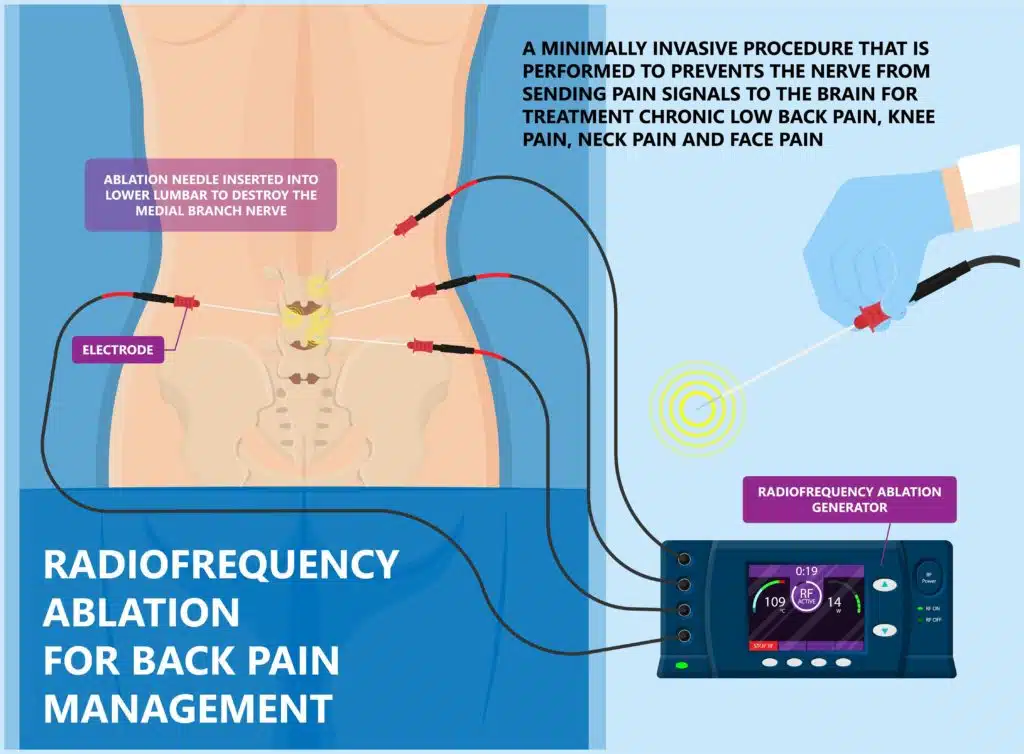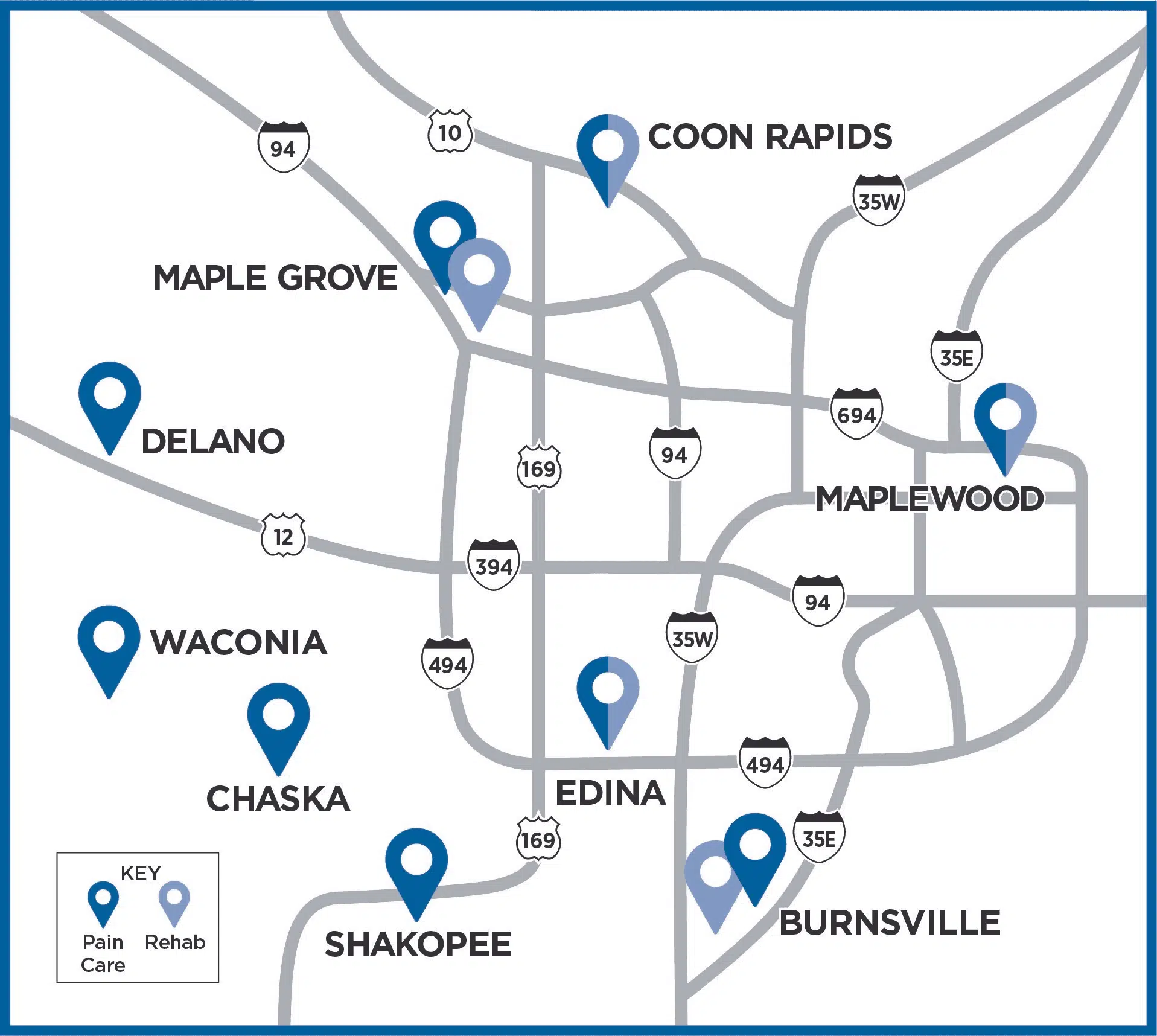Radiofrequency (Nerve) Ablations (RFA)
Radiofrequency (Nerve) Ablation (RFA) uses electrical current produced by a radio wave to heat up a small area of nerve tissue to stop it from sending pain signals. It can provide lasting relief for people with chronic pain, especially in the lower back, neck and arthritic joints. Pain relief from RFA can last from six to 12 months and in some cases, for years.
Scroll down to meet Dr. Faltas with iSpine Clinics, and learn more about what to expect during a RFA procedure.
How does a Radiofrequency Ablation work?
This minimally invasive procedure is performed by our specialist using x-ray guidance (fluoroscopy) to direct the RFA needle toward the medial or lateral branch nerves. Once the needle is placed accurately, an active electrode is inserted through the needle and a small amount of electrical current is carefully passed next to the target nerve and a safe distance from other nerves. This current may briefly recreate the painful symptoms that the patient usually experiences.
What to expect during an RFA procedure
Your pain specialist will have you lay on your stomach, the skin over the treatment area (neck, mid-back, or low back) is well cleansed to minimize the risk of infection. The specialist numbs a small area of skin by injecting a numbing medicine (anesthetic) in the region of the RFA injection. After confirming the nerve that is your pain source, your specialist will create a heat lesion on the nerve using the preferred method (conventional, pulsed, or water-cooled radiofrequency) of ablation. This process may be repeated for additional nerves. The entire procedure takes 30-90 minutes.
What to expect after an RFA procedure
Immediately after the RFA, the patient is shifted to a recovery room for 15 minutes to an hour (if sedation was used) where his/her vital signs are continuously monitored. Depending on the area treated, a superficial burning pain with hypersensitivity, like a sunburn feeling may be experienced. Sometimes a slight numbness of the skin over the same area may also be experienced. Pain relief after RFA is typically experienced 1 to 3 weeks after the procedure. It is advised to rest for several days before returning to normal activities. Patients may engage in regular activities but should let pain levels be their guide for the first few days.

Explore the Twin Cities Metro Clinics where we evaluate patients for Radiofrequency Ablations
*iSpine Clinics where Radiofrequency Ablation procedures are conducted

Dark blue pins represent iSpine Pain Clinic locations

